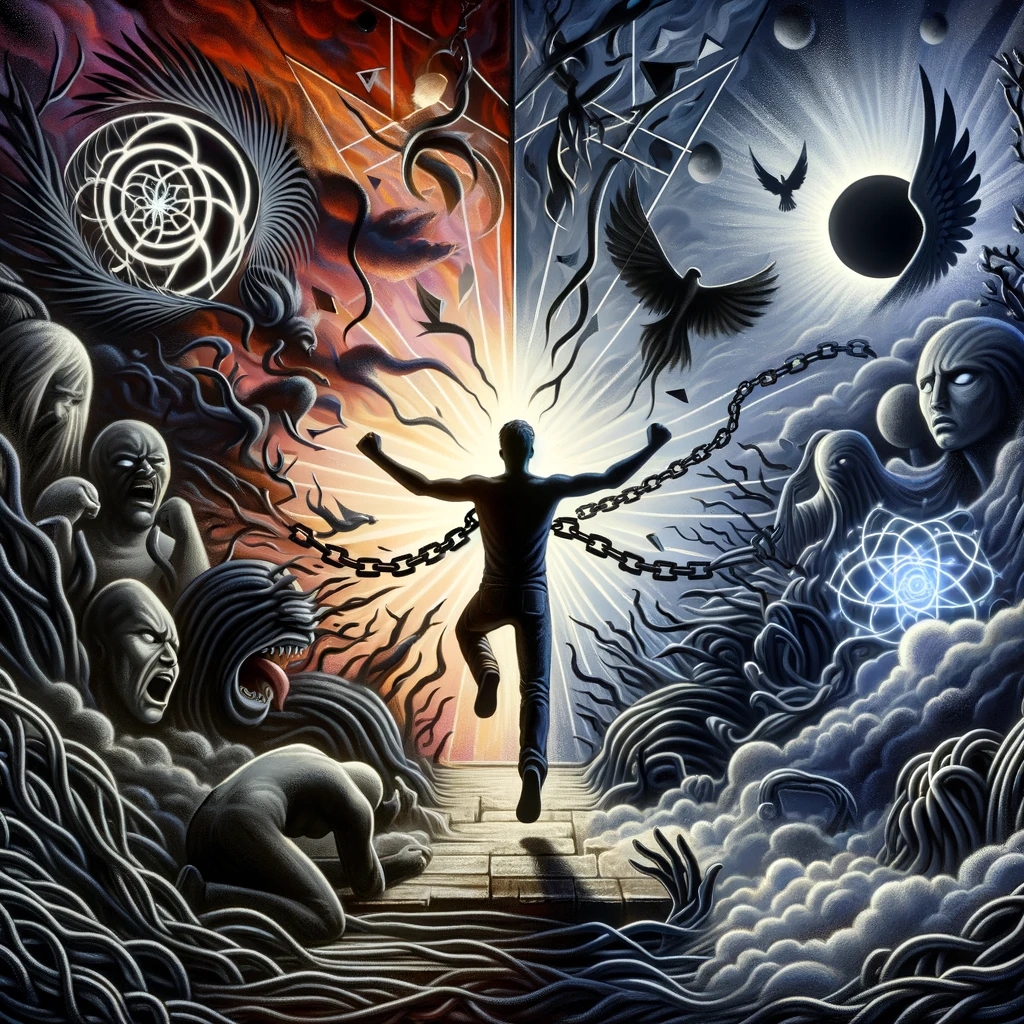Cults have proven to be a profound topic of curiosity due to their cryptic nature and the unfathomable degree of sway they hold over their followers. Often disguised under the pretense of path-breaking ideology or spiritual enlightenment, these groups have managed to exploit the human yearning for acceptance and purpose into obedience and unquestionable devotion. The entrapped plight of cult members and the incredible difficulty of departure from such groups is a testament to the psychological mastery wielded by cult leaders. The layers of complexities that form the anatomy of a cult merit closer scrutiny, allowing us a glimpse into the convolutions of the human mind and how it is skillfully manipulated to serve the interests of a select few.
Table of Contents
- Defining Cults: More than Just Religion
- The Power of Psychological Manipulation: Anatomy of a Cult Explained
- Cults and Isolation: The Strategic Separation
- The Challenges of Leaving a Cult: An Insider’s Perspective
- Recovering from Cult Influence: Hope and Healing
- Summary: Anatomy of a Cult and How to Leave
- FAQ: Anatomy of a Cult
- About Dr. Gary Danko
- Connect with Dr. Danko to Discuss the Anatomy of a Cult and Treatment Options
- Related Articles
Defining Cults: More than Just Religion
Cults cannot be confined to a single definition due to their vast variety and the different forms they take. Broadly, they can be defined as groups that exhibit intense dedication to a charismatic leader and his ideas, which often diverge substantially from mainstream society. The common misconception that cults are purely religious entities obscures the fact that they span a wide range of focus, from politics and social reform to science and even pop culture. Religion is merely a tool among many that cults use to inspire devotion and attachment among its followers.
Furthermore, it’s important to underscore that not all religious or ideological groups are classified as cults. The defining characteristic of a cult, and what constitutes the core of its harmful potential, is its manipulative control over members, skewing their perception of reality, stifearing their independence, and inciting a fear of leaving the group. Thus, the study of cults extends beyond the purview of religious studies and merges into the realm of psychology, sociology, and human behavior.
The Power of Psychological Manipulation: Anatomy of a Cult Explained
The inception of a cult is inherently linked to the power of manipulation wielded by its leaders. By harnessing the primal human need for belonging and purpose, cult leaders are able to subtly coerce individuals into following their doctrines, blurring the boundaries between free will and indoctrination. Psychological manipulation forms the bedrock of a cult’s anatomy, as it ensures unfaltering loyalty and obedience.
Cult leaders often use a combination of mind control techniques such as gaslighting, brainwashing, and emotional manipulation to mold the perception of their followers. These tactics work effectively to create a fabricated reality where the cult leader’s ideas and commands are accepted without question, and dissent becomes virtually unthinkable. The depiction of the leader as a divinely chosen figure or a misunderstood genius aids in fostering a sense of awe and reverence among followers, further solidifying their allegiance.
Cults and Isolation: The Strategic Separation
Perhaps one of the most notable tactics employed by cult leaders is the strategic isolation of their followers. By cutting a person off from their well-established social circles, a cult leader is able to exercise more intensive control. Isolation enables cult leaders to implement extensive manipulation techniques, effectively disorienting and disengaging members from reality.
This isolation can take many forms, ranging from physical isolation from family and friends to psychological isolation, wherein the followers are led to believe that they are part of a chosen elite, misunderstood by the world. This tactic not only strengthens the bond between the followers and the leader, but also minimizes any potential external influences that may challenge the authority of the cult leader.
The Challenges of Leaving a Cult: An Insider’s Perspective
Leaving a cult can be an arduous journey- both physically and psychologically. The thought of losing the seemingly protective and organized structure of a cult can be disconcerting to its members. Cults employ numerous tactics to dissuade members from leaving the group, such as instilling fear of the outside world and shunning those who attempt to leave, leaving these victims trapped in multiple layers of psychological barriers.
Moreover, the pervasive nature of psychological manipulation in a cult often leaves the members in a confused state. They question their own thoughts and actions even after they have left. This makes the process of departure agonizingly difficult and slow. The place to begin is to understand the anatomy of a cult.
Recovering from Cult Influence: Hope and Healing
Despite the daunting challenges of extricating oneself from a cult, hope and healing are attainable. It’s crucial to understand that recovery is a process that varies individually and can often take significant time. Initial stages of recovery often involve an immersion into reality. This involves therapy, counseling, reconnecting with family and friends, and re-establishing a sense of individual self.
However, the key to successful recovery is patience and persistence. Former cult members might grapple with guilt, confusion, as well as a sense of lost identity and purpose. Yet with appropriate support and intervention, they can reclaim their sense of self. They can find purpose and embrace a life of freedom and authenticity.
Summary: Anatomy of a Cult and How to Leave
Cults are more than mere religious or ideological groups. They represent a complex nexus of psychological manipulation, isolation, and intense devotion. To truly understand the nature of cults and the daunting challenge of leaving one, we must delve into the anatomy of a cult. We must unravel the intricate web of manipulation that binds their members. Importantly, it’s key to remember that despite the challenges that former cult followers face, recovery is possible. We must work to restore a life of autonomy and authenticity. Through appropriate support and intervention, victims of cult manipulation can reclaim their independence. They can heal from the damages perpetuated by their once tyrannical allegiance. By understanding the intricacies involved in cult behaviour, society at large can work towards offering an empathetic, informed support system for those who manage to escape the clutches of cult influence.
FAQ: Anatomy of a Cult
A: Look for extreme devotion to a leader, isolation from society, exploitation, and harm to members.
A: It involves unquestioning commitment, collective identity, and often a belief in a unique mission or end times.
Practices may include rigorous rituals, communal living, strict hierarchies, and secretive operations.
A: Charismatic leadership, mind control, financial exploitation, and isolation from the outside world.
A: Cults exert control over members’ lives, lack accountability, and often harm members, unlike most religions.
A: Charisma, authoritarianism, and claims of special knowledge or connection to a higher power.
A: Cultism features include intense loyalty to the group, aggressive recruitment tactics, and severe penalties for dissent.
A: Group identity, central leadership, sacred texts or teachings, ritual practices, moral codes, us versus them mentality, and promised rewards.
About Dr. Gary Danko
Dr. Gary Danko, PhD, is a renowned expert in Metaphysical Psychology and a Certified Hypnotherapist based in Clearwater, Florida. With a profound commitment to fostering wellness, Dr. Danko specializes in unlocking the human mind’s potential, guiding individuals towards a healthier, happier, and more fulfilling life. His holistic approach integrates spirituality, physical health, and mental well-being, offering a unique perspective on personal growth. Passionate about deep, meaningful conversations, Dr. Danko explores the intricacies of the human spirit and mind, providing insights that enlighten and inspire.
Connect with Dr. Danko to Discuss the Anatomy of a Cult and Treatment Options
Are you ready to embark on a journey towards a more fulfilling life? Discover the transformative power of metaphysical psychology and hypnotherapy with Dr. Gary Danko. Schedule your Free Discovery Session today and take the first step towards unlocking your true potential. Whether you’re seeking spiritual growth, mental clarity, or physical well-being, Dr. Danko’s expertise will guide you on the path to success. Don’t miss this opportunity to transform your life. Contact Dr. Danko now for your free session and experience the change you’ve been longing for!
Related Articles
How to Get Help After Leaving a Cult
Leaving a Cult: A Practical Guide to Reclaiming Your Life
Understanding Cult Recruitment Tactics: How People Get Trapped
Cults and Recruitment: Understanding the Mechanics
Brainwashed: The Hidden Dangers of Cults


Add your first comment to this post
You must be logged in to post a comment.